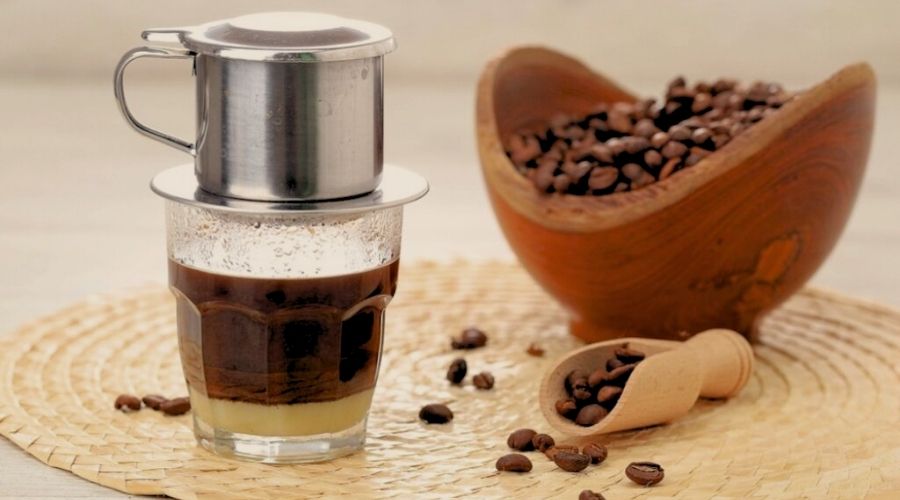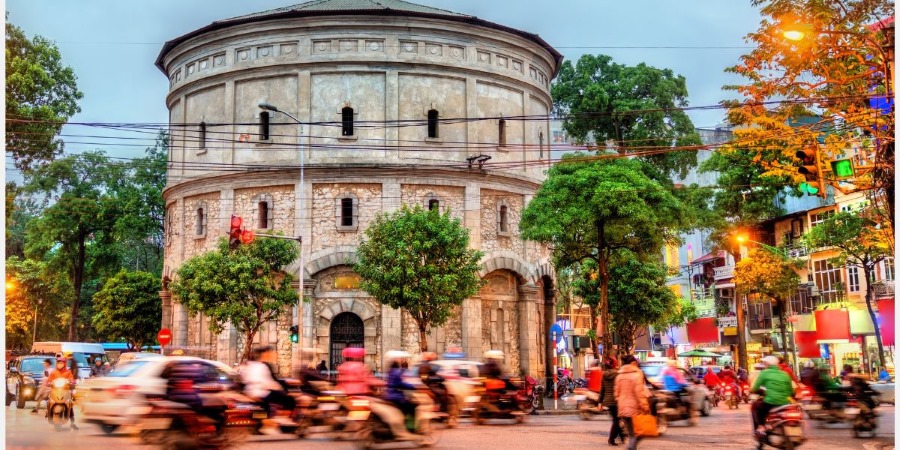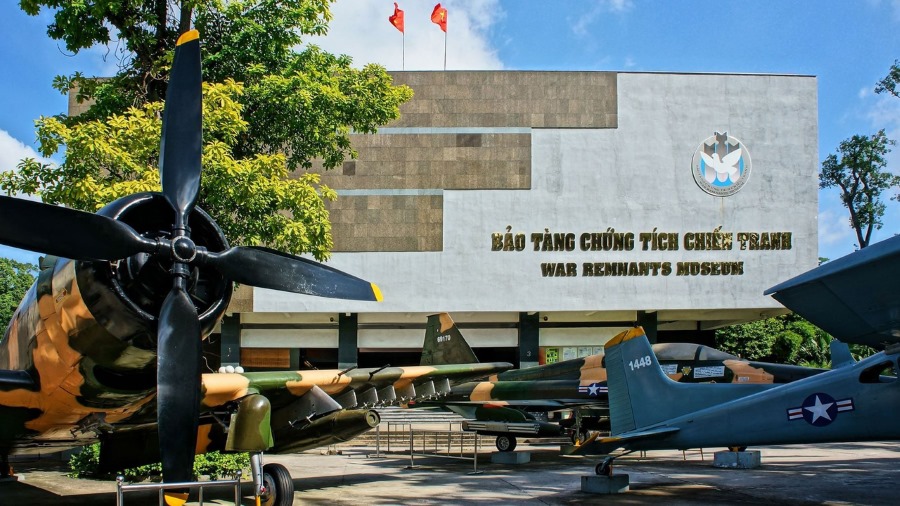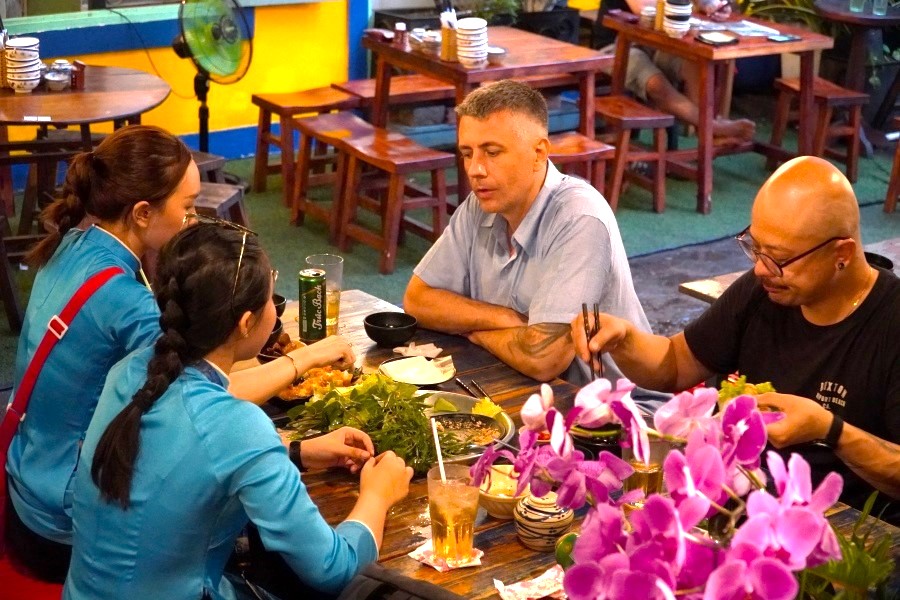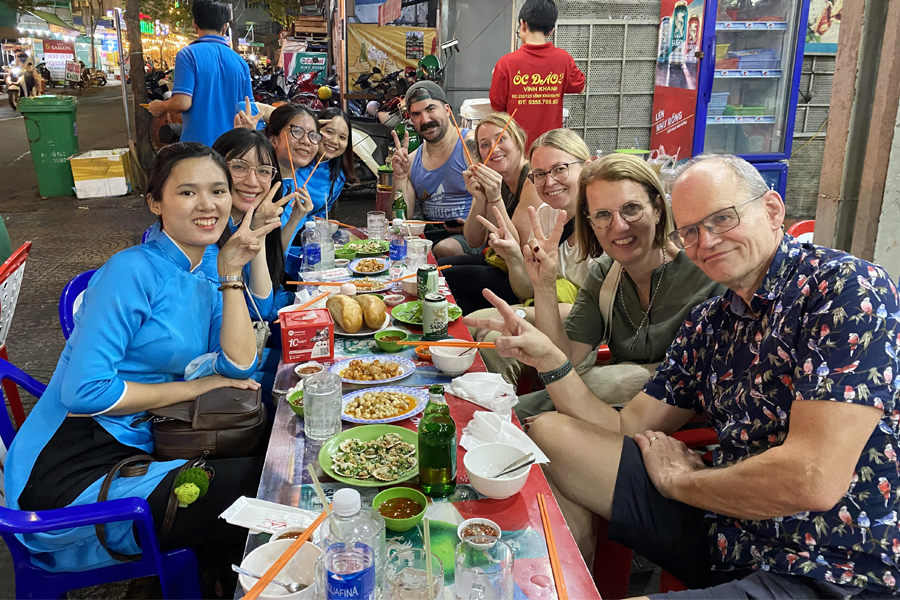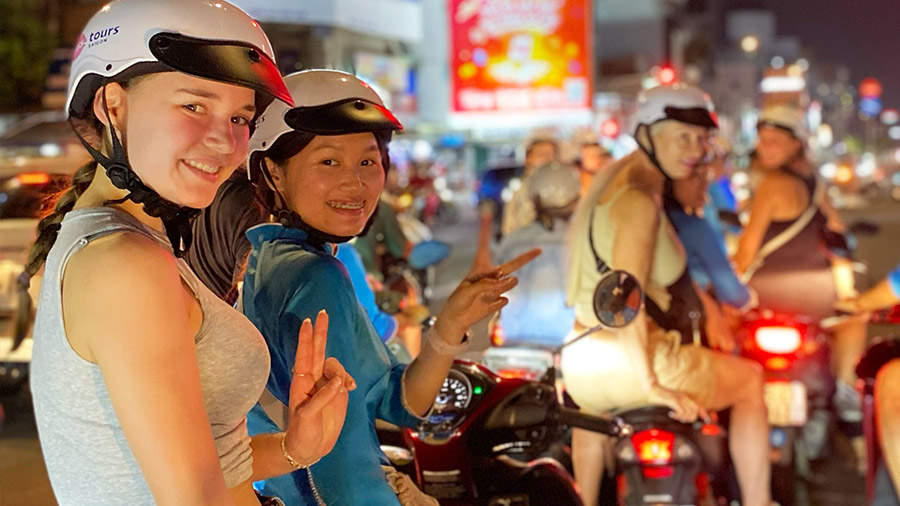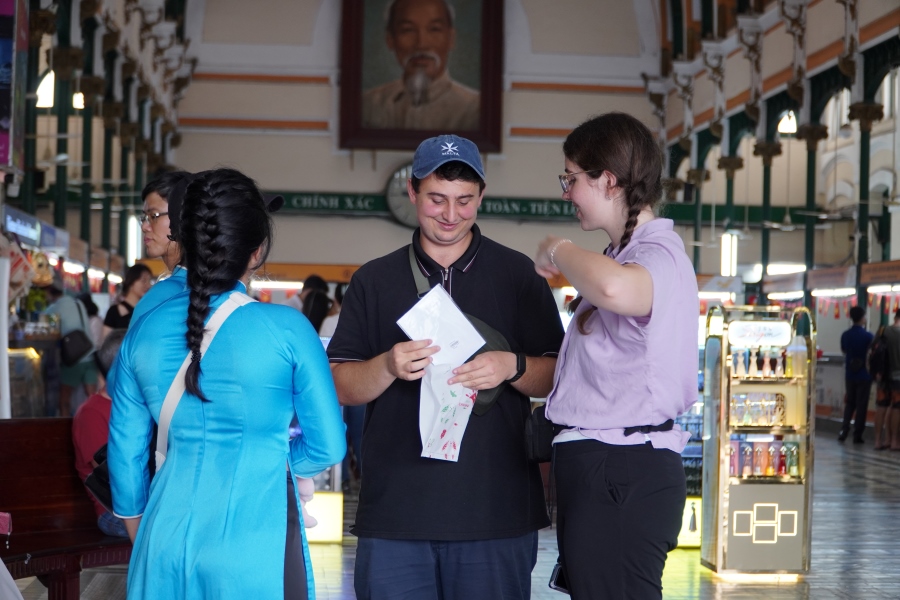In Vietnam, cash payment remains the predominant form of transaction. However, following the disruptions caused by the COVID-19 pandemic, there has been a gradual surge in the popularity of bank transfers, ATMs, and e-wallets as alternative payment methods in the country. Consequently, when navigating Vietnam, it’s essential to bear in mind the adages: “Cash is King” and “Money transfer is Queen”. In this comprehensive guide, KissTours explores the nuances of managing finances, providing invaluable insights on optimizing the use of cash, credit cards, and ATMs in Vietnam to elevate your overall travel experience.
1. The Importance of Cash in Vietnam
Various credit card payment methods in Vietnam have been accepted, especially in hotels, resorts, restaurants, and bars catering to international tourists. However, in some local establishments such as homestays, local motels, certain markets, and local eateries, cash remains the predominant and sometimes the only accepted payment method.
Therefore, cash remains highly important and necessary if you plan to explore local venues in Vietnam. Additionally, when using credit cards, remember that you may incur fees compared to the amount you would pay with cash. For a cost-effective journey, opting for cash transactions is advisable when exploring Vietnam.
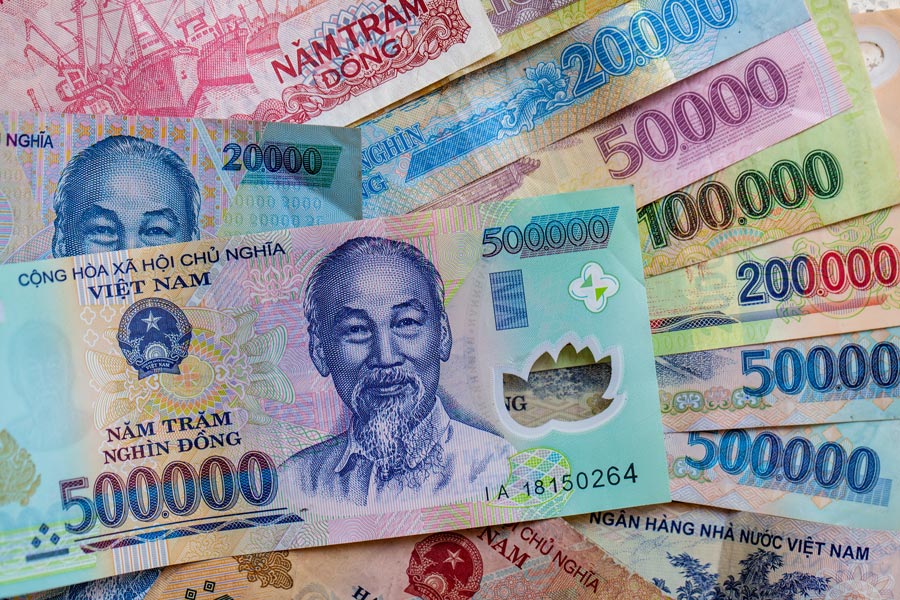
How to get cash in Vietnam?
There are two primary ways to access VND: exchanging your home currency or withdrawing cash from local ATMs.
- Using Your Home Currency and Exchanging it in Vietnam: You can bring your home currency and exchange it at currency exchange locations in Vietnam. Some reference points for currency exchange locations in Vietnam may be useful for you.
- Withdrawing Cash from ATMs in Vietnam: ATMs are widely available throughout the country, providing convenient access to VND. This method often offers potentially lower fees and readily available local currency.
2. A Guide for Withdrawing Cash from ATMs in Vietnam
2.1. Advantages of withdrawing cash from ATMs in Vietnam
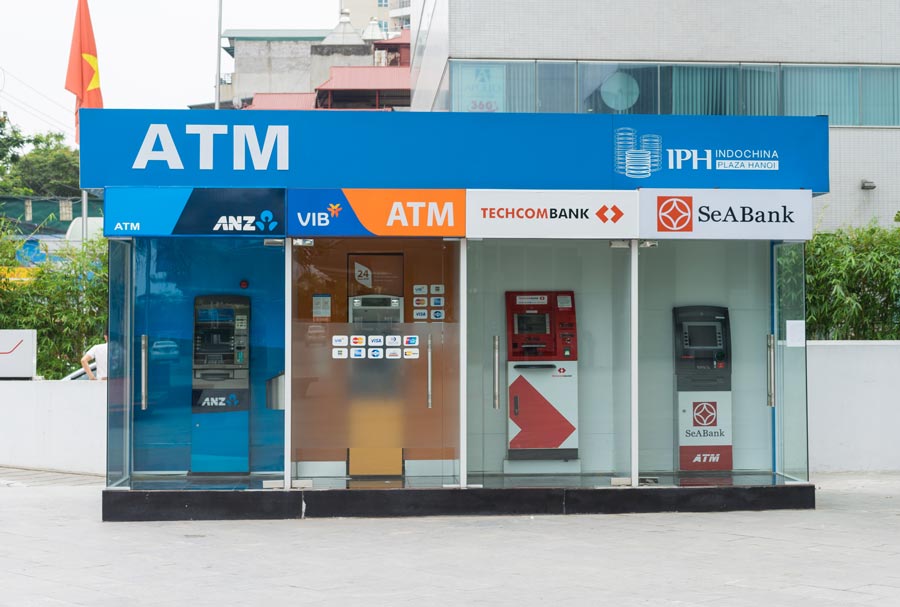
- Convenience: ATMs are widely available in both urban and even rural areas in Vietnam. This makes it convenient for travelers to access cash when needed without relying solely on Vietnam banking or currency exchange services.
- Beneficial: Using an ATM in Vietnam can help you avoid unfavorable exchange rates that may be offered at currency exchange offices.
- Accessibility: Many ATMs in Vietnam accept international cards, such as Visa or MasterCard.
- Lower Fees: ATM withdrawals often have lower fees compared to currency exchange services or withdrawing money directly from a bank teller.
2.2. Best banks in Vietnam for foreigners
Famous local banks in Vietnam: Vietcombank, Vietinbank, BIDV, Agribank, MB Bank, TPBank, Techcombank, ACB, SCB, SeABank, VIB.
Top international banks in Vietnam: Citibank, HSBC, ANZ, Shinhan Bank, Standard Chartered Bank, UOB, Woori Bank.
2.3. How to find ATMs in Vietnam
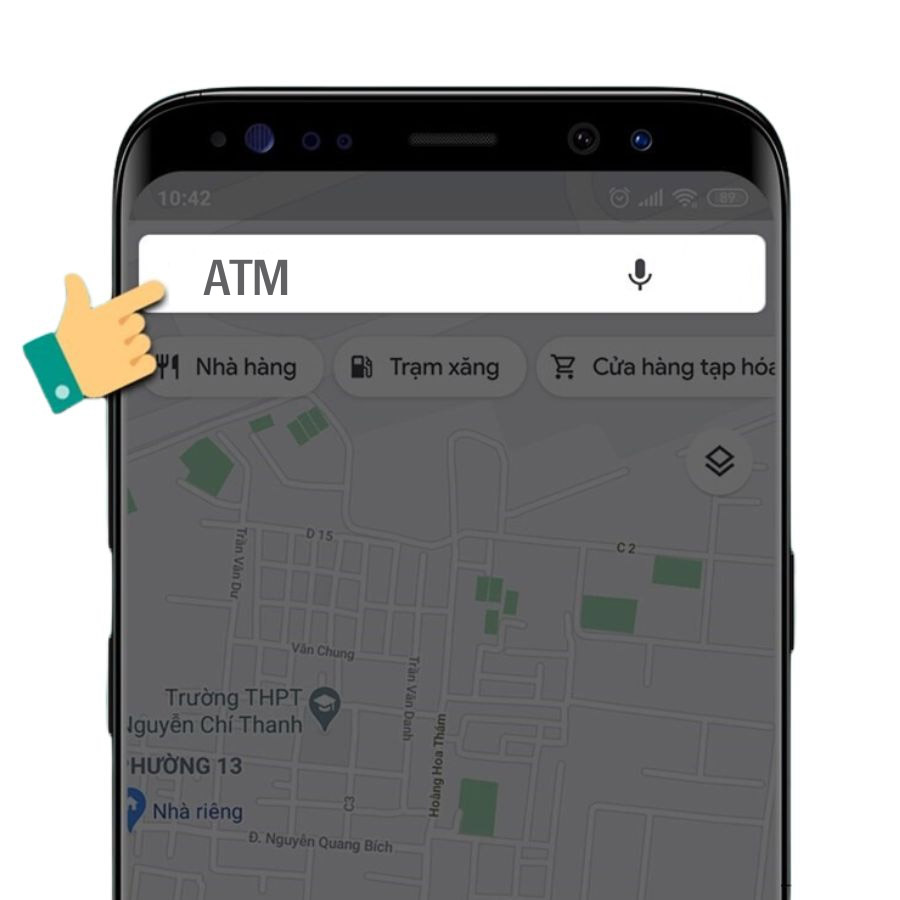
ATMs are widely accessible across Vietnam, spanning major cities like Ho Chi Minh City, Hanoi, and Da Nang, as well as smaller urban centers. They are prominently located, particularly in tourist-centric areas. Operating round the clock, these cash machines offer 24/7 availability, allowing you the flexibility to withdraw money at any time. You can use Google Maps to search for the nearest ATM in your area.
- Type “ATM” into the search bar on Google Maps.
- A list of nearby banks along with their locations will be displayed.
Note: Most ATMs may not be listed comprehensively on Google Maps. Therefore, the advice for you is to inquire at hotels or restaurants in your vicinity to find the nearest ATMs.
2.4. Which cards do ATMs in Vietnam accept
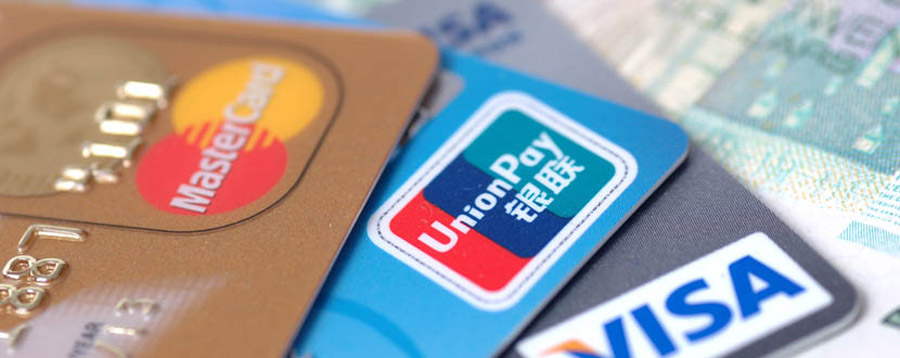
ATMs widely accommodate various card types such as MasterCard, Visa, UnionPay, and JCB. It is crucial to verify the signage on each ATM, indicating the accepted card types. Ensuring compatibility will prevent the risk of your card becoming stuck.
2.5. Vietnam ATM Fees in 2024
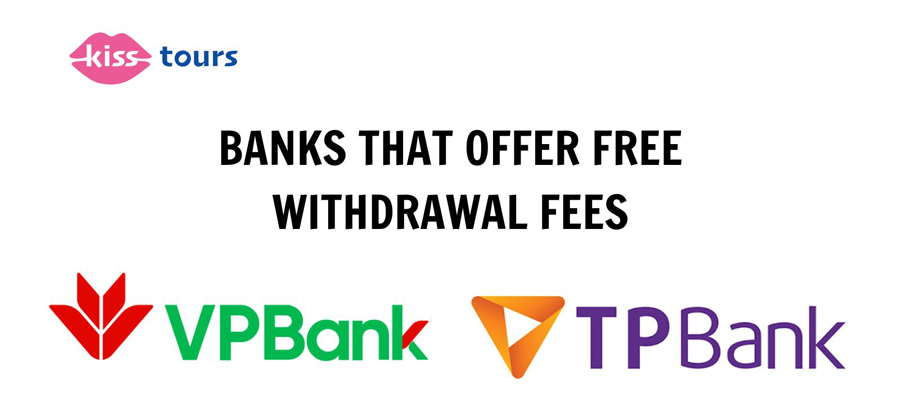
At the time of debit cards, transaction costs are also charged generally an amount between 40,000 VND (~ USD 1.5) to 100,000 VND (~ USD 4):
- Vietcombank: 50.000 VND
- Vietinbank: 55.000 VND
- Vietcombank: 50.000 VND
- BIDV: 3 % of the full amount
- Agribank: 22.000 VND
- MB Bank: 49.000 VND
- VIB Bank: 50.000 VND
- HSBC: 3 – 3.5% of the full amount
- Citibank: 55.000 VND
- Sacombank: 30.000 VND
The good news for you is that currently there are two main banks, TP Bank and VP Bank, that offer free withdrawal fees. If you want to avoid these fees, only use TP Bank and VP Bank.
2.6. Withdrawal Limit for Vietnam ATMs
The regulations concerning the maximum limit of debit cards in Vietnam and the withdrawal fees for each transaction differ among banks. However, local bank ATMs generally have a comparatively lower maximum withdrawal amount per transaction when compared to international banks.
- Vietinbank: 5.000.000 VND
- TP Bank: 5.000.000 VND
- VPBank: 10.000.000 VND
- Vietcombank: 5.000.000 VND
- BIDV: 5.000.000 VND
- Agribank: 6.000.000 VND
- MB Bank: 5.000.000 VND
- VIB Bank: 5.000.000 VND
- HSBC: 8.000.000 VND
- Citibank: 8.000.000 VND
- Sacombank: 10.000.000 VND
- ANZ: 10.000.000 VND
2.7. Tips for Frugal ATM Withdrawals
- ATMs are not replenished during Tet (Vietnamese New Year). It is conceivable that ATMs may run out of cash during this period.
- Choose ATMs from foreign banks with a higher maximum withdrawal amount to minimize the total costs that you have to pay and avoid having to go to the ATM too often to withdraw cash in Vietnam.
- Withdraw a substantial amount in each transaction to reduce withdrawal fees.
- Count the money before departing from the ATMs.
- Consult the Vietcombank website (search for Vietcombank exchange rate on Google) to ensure a favorable exchange rate and avoid unfavorable rates at the ATMs.
- If your card is swallowed when withdrawing money at an ATM, contact the bank hotline or the phone number provided on the ATM. Make sure to retain the receipt and capture a photo of the ATM number in case of any issues.
3. Guide to Using Credit Cards in Vietnam
3.1. Locations Accepting Credit Cards in Vietnam
Payments with credit cards are not widespread. This is mainly applicable in cities and popular tourist destinations.
- Shopping malls encompass shops, restaurants, and coffee shops.
- Numerous stores in markets frequented by foreign visitors.
- Well-known chain establishments such as supermarkets (Circle K, Aeon Ministop, FamilyMart), pharmacies (Long Chau, Phuc An Khang, Pharmacy), and electronics centers (Nguyen Kim, The Gioi Di Dong, Dien May Xanh, Pico).
- Tourist and expat areas include the Saigon backpacker area, Ta Hien Street, Hanoi Old Quarter, and Hoi An ancient towns.
- Higher-end restaurants and coffee shops, bars, pubs, karaoke establishments.
- Hotels and resorts ranging from 2-star to 5-star.
- Taxis operated by top brands like Vinasun and Mai Linh.
- Tour desks and travel agencies, international airports, and ticket booths at railway stations.
- Numerous spas, hair salons, barbershops, and tailor shops.
3.2. Fees for Using Credit Cards in Vietnam
- The standard transaction fee is 3%. Amex payments typically incur an additional 4% fee.
- Higher-end establishments generally don’t add extra charges, while the surcharge varies in smaller businesses (often higher) and upscale providers (more moderate).
3.3. Notes for Using Credit Cards in Vietnam
- Notify your bank about your trip to Vietnam to avoid card suspension due to unusual activity. Keep your card provider’s contact number handy for any issues.
- If your card is lost, contact your bank immediately to block it.
- Use PINs or passwords on your mobile devices to prevent theft.
- Keep your card in sight during transactions.
- Be cautious about online payments on unfamiliar platforms.
- Verify any additional fees before using your credit card in Vietnam.
4. Conclusion – Which one is better?
Ultimately, the best payment method for your Vietnamese journey depends on your individual needs and preferences. Each option, including cash, credit cards, and ATMs in Vietnam, comes with its own set of advantages and drawbacks.
4.1. Cash:
- Pros: No transaction fees, widely accepted in local establishments, and avoids potential payment issues.
- Cons: Risk of carrying significant amounts, potential for currency exchange fees depending on your home country.
4.2. Credit Cards:
- Pros: Convenient, and secure, some cards offer travel rewards, widely accepted in tourist areas and larger establishments.
- Cons: Potential transaction fees, may not be accepted everywhere, some businesses surcharge credit card payments.
4.3. ATMs in Vietnam:
- Pros: readily access local currency, often offer more competitive exchange rates than exchange bureaus.
- Cons: Potential ATM fees, and risk of card skimming or malfunction, may not be readily available in remote areas.
Consider your travel plans, spending budget, and planned destinations when making your decision. Opting for a combination of cash and ATMs might be ideal for flexibility and cost-effectiveness. Remember to inform your bank about your travel dates and ensure you have reliable PIN and card security measures in place.
By weighing the pros and cons of each payment method, you can confidently choose the best option for a smooth and financially enjoyable trip to Vietnam. Additionally, you can visit local establishments in Vietnam without concerns about payment issues. Hopefully, this article provides useful tips to help you choose the optimal payment method for your upcoming trip.
- How to get a Vietnam E -Visa and Vietnam Visa On Arrival in 2024?
- Is Vietnam Safe? Uncovering the Enjoyable Side of Travel in Vietnam!
- Ensuring Safe Travels: A Guide to Avoiding Scams in Vietnam 2024.
- Top Ho Chi Minh City street food that you must try!
And…
If you want to immerse yourself in the cultural identity and make friends with locals when you come to Vietnam, consider taking a guided tour and street food experience with a local guide.
You can take the Saigon By Night and Street Food Tour of KissTour. These tours allow you to explore the vibrant and lively city of Ho Chi Minh City on motorbikes after the sun sets. Alternatively, the Saigon City Tour is also a great option if you want to explore the city during the day.
With your friendly and knowledgeable guides, they will take you to the most iconic places
and provide insights into Vietnamese food and culture. This feels like you’re hanging out with friends and you just need to enjoy the trip!

